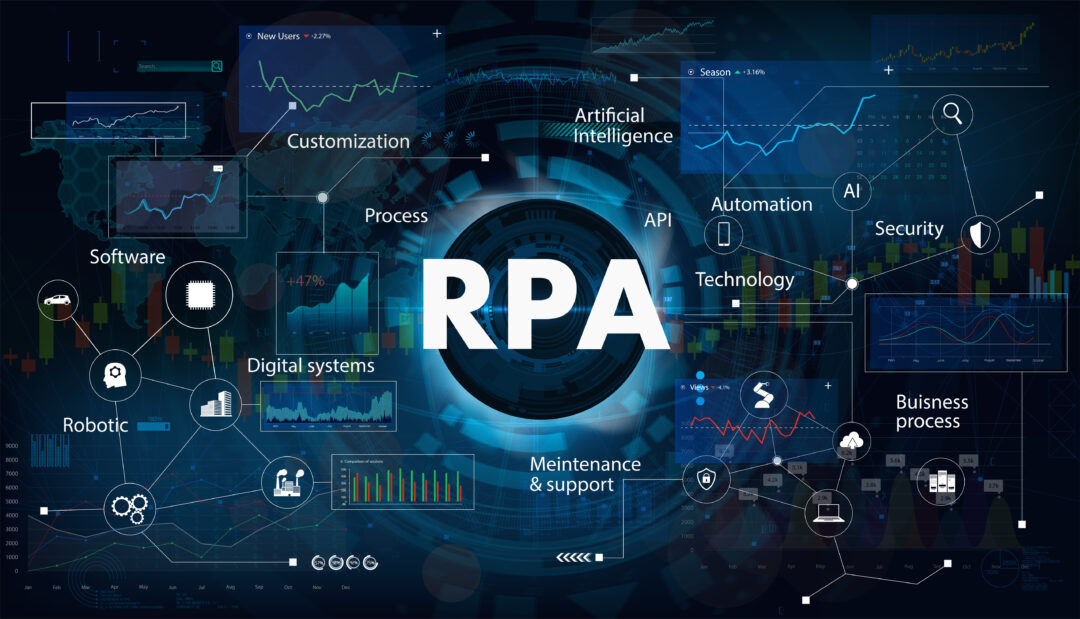Gartner has projected the worldwide robotic process automation (RPA) software market to reach $2.9bn in revenue this year, increasing by 19.5 per cent from 2021
Businesses across multiple sectors are leveraging RPA software to accelerate their business process automation initiatives and digital transformation plans, as the challenge of constant innovation continues to grow.
The technology is capable of helping organisations overcome issues brought by long-standing legacy systems, to improve efficiency.
Vendors across the space are shifting from traditional single tech-focused offerings to a more advanced suite of tools, encompassing capabilities such as low-code, process mining and Integration Platform-as-a-Service (iPaaS).
Although growing at a slower pace than previous years, the worldwide RPA software market is predicted to continue experiencing double-digit growth in 2023, growing 17.5 per cent year-on-year.
| 2021 | 2022 | 2023 | |
|---|---|---|---|
| Revenue (millions of US Dollars) | 2,389 | 2,854 | 3,352 |
| Growth (%) | 30.9 | 19.5 | 17.5 |
Source: Gartner (August 2022)
“By achieving a growth rate of 31 per cent in 2021, the RPA market grew well above the average worldwide software market growth rate of 16 per cent,” said Cathy Tornbohm, distinguished VP analyst at Gartner.
“Organisations are leveraging RPA to accelerate business process automation initiatives and digital transformation plans, linking their legacy nightmares to their digital dreams to improve operational efficiency.”
Varsha Mehta, senior market research specialist at Gartner, commented: “RPA companies are rapidly evolving to provide a wider set of larger automation platforms. Organisations will look to increase their spending on RPA software solutions because they still have a lot of repetitive, manual work that through automation could free up employees’ time to focus on more strategic work.”
Additionally, Gartner predicts that through 2024, the drive towards a state of hyperautomation will drive organisations to adopt at least three out of the 20 process-agnostic types of software that enable this kind of emerging technology.
The role of project management
While Gartner’s forecast demonstrates a great deal of promise for the future of RPA in business, it’s vital that organisations do not rush into deployment of such technology. After all, the competitive advantages that automation generally brings will not nullify possible pitfalls, and ensuring all data and workflows are properly structured and fully optimised prior to implementation is key.
“Too many leaders prioritise technology over strategy and simply do not understand what automation really is and should drive,” said Ash Finnegan, digital transformation officer at Conga.
“Most aspire to be disrupters, picking a technology and implementing it at speed, without necessarily establishing clear objectives. They rush to adopt the latest AI or RPA programme with no real idea of how this will improve their overall services or business performance.
“AI is not a silver bullet – it is only as good as the data provided, if there are bad processes in place, automation will only accelerate this issue. Therefore, integrating systems and streamlining processes should be the first priority. All data needs to be accounted for across the revenue lifecycle before leaders consider applying new technology, or indeed, make any major strategic decisions or changes for their organisation.
“Adopting AI, or any automation technology for that matter, is a process, not a race – all systems, data and processes need to be aligned. Leaders need to be more strategic with their investments and approach automation with a level head, rolling out a programme in a phased manner, considering each phase of their operations from front to back office. By streamlining their operational model and unifying systems of record, companies will have far greater insight into data streams, and this will empower AI, taking their business to a true state of intelligence. From here, automation can actually add real value.”
Related:
How hyperautomation is disrupting global telecoms to fuel growth — Chris Lamberton, CEO of TrustPortal, discusses how hyperautomation technology is helping drive growth in the global telecoms market.
Cobots: the tech attracting the Gen Z workforce — Tim Mercer, CEO of Vapour, discusses how collaborative robots, also known as cobots, are helping companies harness smart technology to improve business operations.







